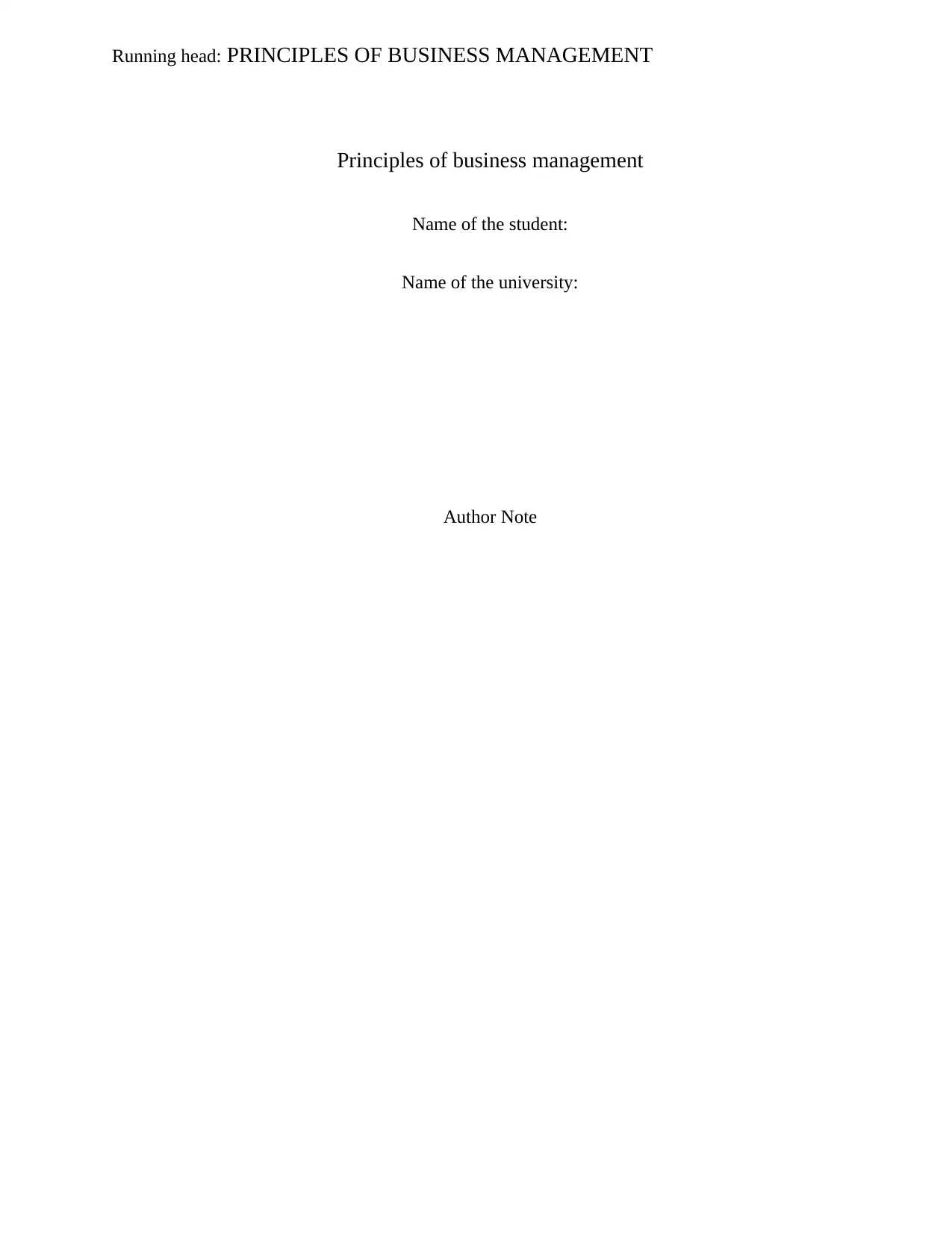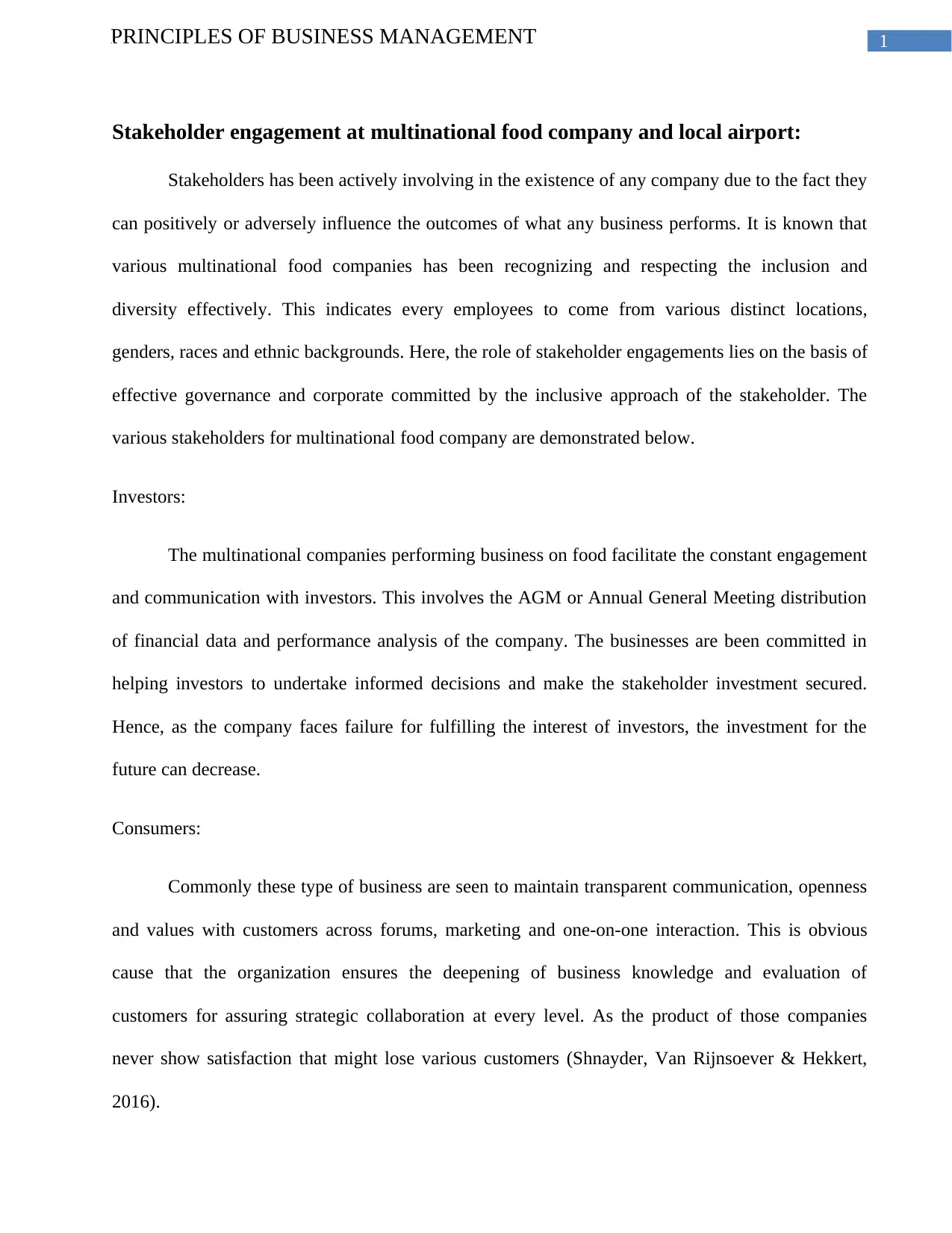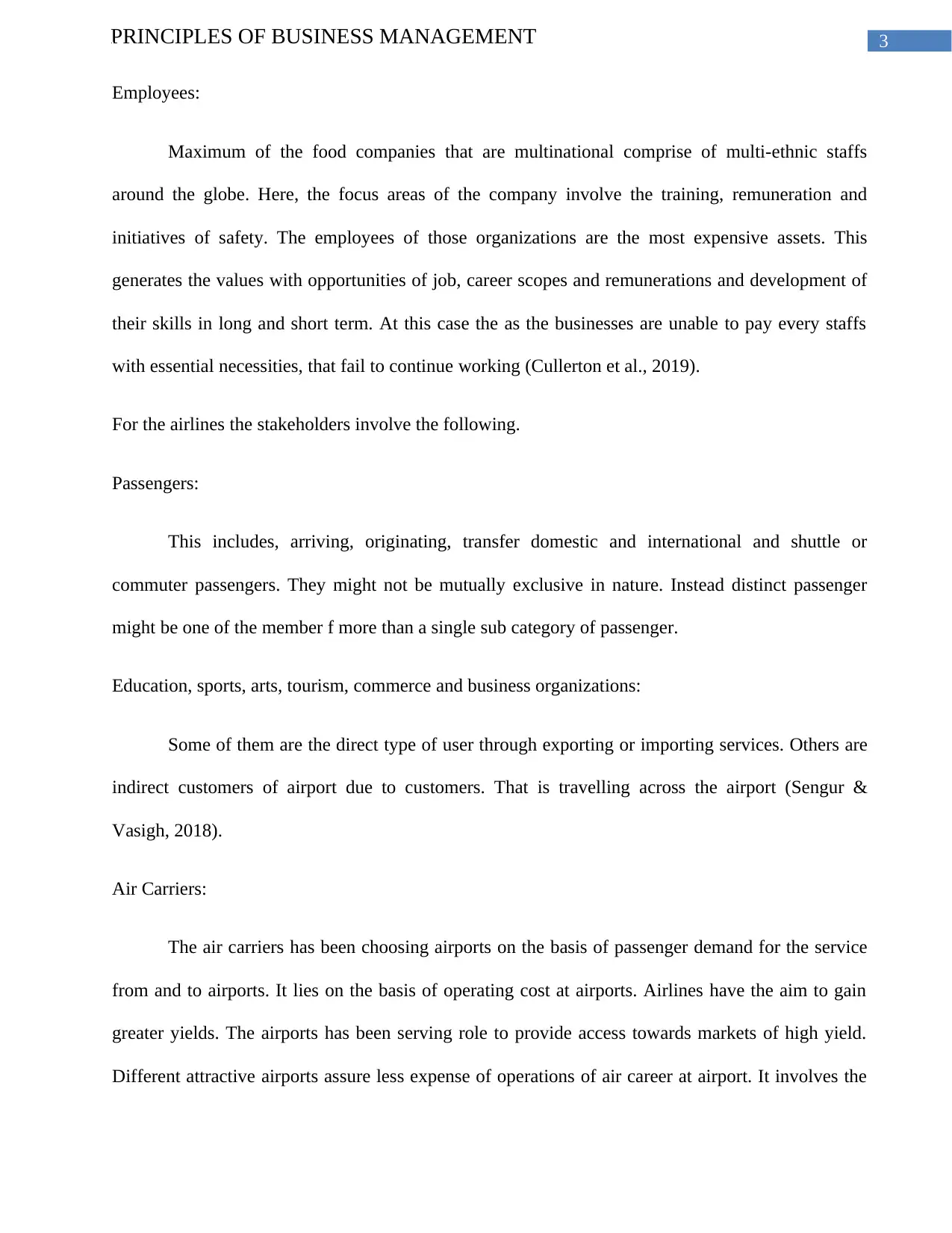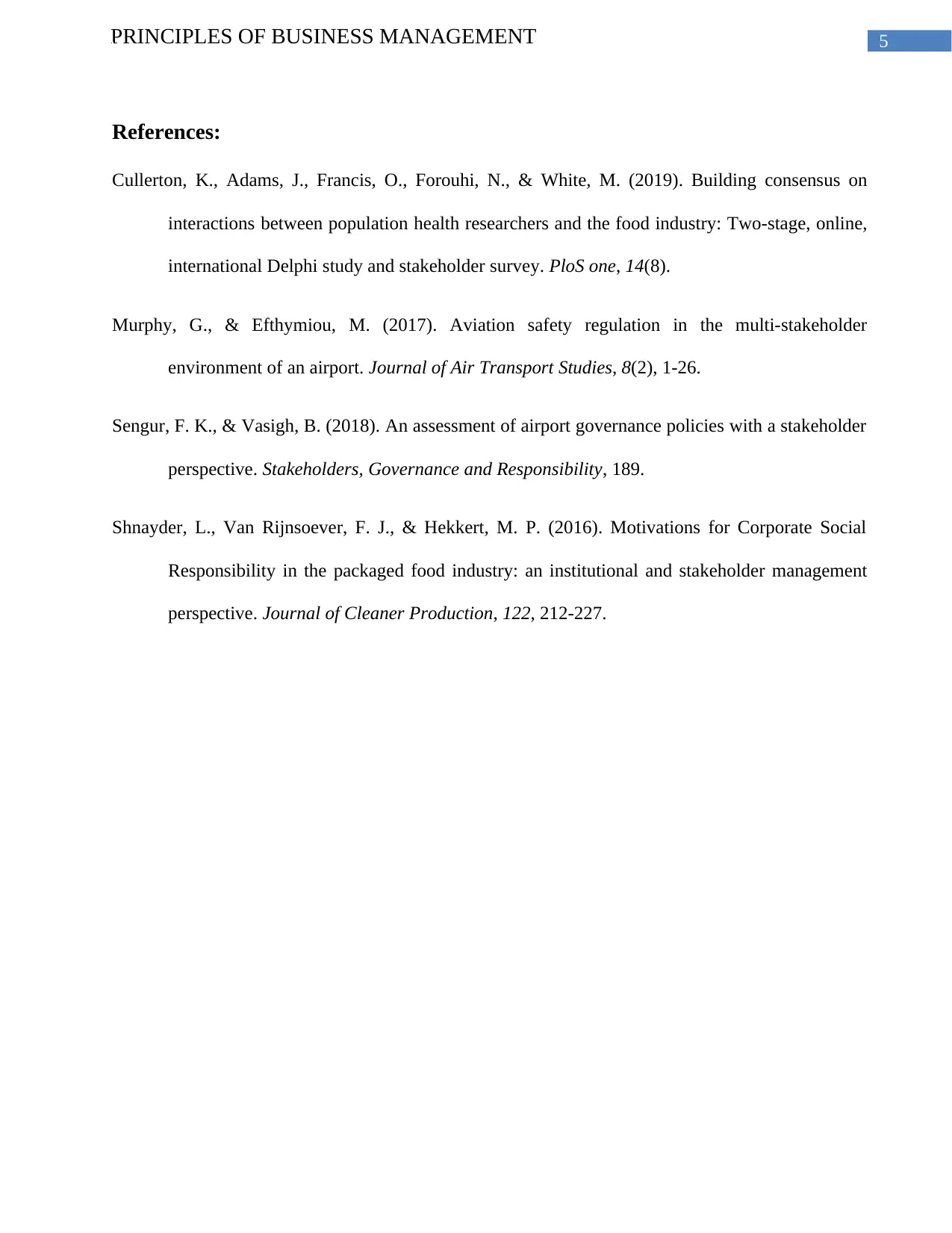Stakeholder Engagement in Business Management: A Report
VerifiedAdded on 2022/08/10
|6
|806
|164
Report
AI Summary
This report examines the principles of business management through the lens of stakeholder engagement, focusing on multinational food companies and local airports. It identifies key stakeholders such as investors, consumers, and employees for food companies, and passengers, air carriers, and other organizations for airports. The report explores the importance of effective communication, transparency, and ethical practices in managing these stakeholder relationships. It also highlights how stakeholder interests can influence business outcomes and emphasizes the significance of corporate social responsibility. The analysis includes specific examples of stakeholder interactions and the implications of these relationships on business performance, drawing on academic research to support its findings. The report aims to provide insights into the complexities of stakeholder engagement in a globalized business environment, offering practical considerations for businesses seeking to enhance their stakeholder relationships.
1 out of 6













![[object Object]](/_next/static/media/star-bottom.7253800d.svg)